GLOBAL WARMING OF INDIA
Global warming is defined as an increase in the average temperature of the Earth’s atmosphere, especially a sustained increase significant enough to cause changes in the global climate. The term global warming is synonymous with an enhanced greenhouse effect, implying an increase in the amount of greenhouse gases in the earth’s atmosphere, leading to entrapment of more and more solar radiations, and thus increasing the overall temperature of the earth.

India is the second most populous country of the world with a population over 1.2 billion. India lies to the north of the equator between 6° 44′ and 35° 30′ north latitude and 68° 7′ and 97° 25′ east longitude. It shares a coast line of 7517 km with the Indian Ocean, the Arabian Sea and the Bay of Bengal. It has land boundaries with Pakistan, China, Nepal, Bhutan, Burma and Bangladesh.
Climate of India
India exhibits a wide diversity of temperatures. The Himalayas participate in warming by preventing the cold winds from blowing in, and the Thar desert attracts the summer monsoon winds, which are responsible for making the majority of the monsoon season of India. However, the majority of the regions can be considered climatically tropical.
The climate of India is dominated by the monsoon season, which is the most important season of India, providing 80% of the annual rainfall. The season extends from June to September with an average annual rainfall between 750–1,500 mm across the region. The monsoon of India is regarded as the most productive wet season on the earth.
How climatic disasters in India occur due to global warming
FLOODS-

“If you have higher temperatures, you will have more evapo-transpiration. It basically refers to evaporation and transpiration—higher the temperature, more energy is coming onto the Earth’s surface. This means we lose more freshwater resources, leading to droughts,” said Dr. Arpita Mondal, Assistant Professor at IIT Bombay.
 LANDSLIDES-
LANDSLIDES-
 COASTAL ZONE-
COASTAL ZONE-
 CYCLONES-
CYCLONES-
FLOODS-
According to the India Meteorological Department (IMD), the monsoon season in 2019 started at a slow pace due to the weak El Nino, which again has a strong link to climate change. During the monsoon season—from June to September—the southwestern winds pick up moisture from the Indian Ocean and drop it in the form of rains across Indian mainland.
But, last year, the unusually hot summer extended deep into June as the monsoon set in very late across most parts of India. However, by late July, the incessant heavy rains started causing intense flooding in several states simultaneously. As per IMD, last year, India recorded the heaviest rainfall since 1994.
The major flooding episodes of 2019 were recorded in Bihar, Odisha, Kerala, Maharashtra and Karnataka. According to reports, about 2,100 people died, and 25 lakh were affected in the monsoon flooding across India in 2019.
According to the India Meteorological Department (IMD), the monsoon season in 2019 started at a slow pace due to the weak El Nino, which again has a strong link to climate change. During the monsoon season—from June to September—the southwestern winds pick up moisture from the Indian Ocean and drop it in the form of rains across Indian mainland.
But, last year, the unusually hot summer extended deep into June as the monsoon set in very late across most parts of India. However, by late July, the incessant heavy rains started causing intense flooding in several states simultaneously. As per IMD, last year, India recorded the heaviest rainfall since 1994.

DROUGHT-
The intensity of climate change is manifested not just through increased heat and rainfall, but also through severe drought across many parts of India. The debilitating heat wave accompanied by late monsoon led to the drought-like situation in India during last summer. The south-west monsoon brings about 80% rains in the country, and plays an important role in reviving the groundwater in rivers, lakes, to water the crops and provides respite from the soaring summer temperatures.
With the delay in the onset of monsoon, many parts remained parched in 2019.
“If you have higher temperatures, you will have more evapo-transpiration. It basically refers to evaporation and transpiration—higher the temperature, more energy is coming onto the Earth’s surface. This means we lose more freshwater resources, leading to droughts,” said Dr. Arpita Mondal, Assistant Professor at IIT Bombay.
In 2019, India witnessed the second driest pre-monsoon season in the last 65 years. According to the Drought Early Warning System (DEWS) 44 percent of India’s areas were under drought-like conditions. Within this, ‘severe to exceptionally dry conditions’ prevailed in 17.33 percent area, said the report.
Last year, Chennai ran out of the water in the monsoon months of 2019, where temperature soared to 40 degrees celsius. It is the sixth-largest city of India and home to about five million people. The city mostly depends on monsoon rainfall to recharge the water levels, but when finally the rains eventually arrived, it’s intensity was not up to the mark. Last year, the season ended with a 17% rainfall deficit over the long term average. Previously, the city faced acute droughts in 2016, 2017 and 2018 due to failed monsoon.
According to Niti Ayog, a government organisation, 21 Indian cities—including Delhi, Bengaluru, Chennai, and Hyderabad—are expected to run out of groundwater by 2020, and 40% of India’s population will have no access to drinking water by 2030. Groundwater is the source of 40% of India’s water needs and is depleting at an unsustainable rate.

A landslide is defined as the movement of a mass of rock, debris, or earth down a slope. Landslides are a type of "mass wasting," which denotes any down-slope movement of soil and rock under the direct influence of gravity. The term "landslide" encompasses five modes of slope movement: falls, topples, slides, spreads, and flows. These are further subdivided by the type of geologic material (bedrock, debris, or earth). Debris flows (commonly referred to as mudflows or mudslides) and rock falls are examples of common landslide types.
Almost every landslide has multiple causes. Slope movement occurs when forces acting down-slope (mainly due to gravity) exceed the strength of the earth materials that compose the slope. Causes include factors that increase the effects of down-slope forces and factors that contribute to low or reduced strength. Landslides can be initiated in slopes already on the verge of movement by rainfall, snowmelt, changes in water level, stream erosion, changes in ground water, earthquakes, volcanic activity, disturbance by human activities, or any combination of these factors. Earthquake shaking and other factors can also induce landslides underwater. These landslides are called submarine landslides. Submarine landslides sometimes cause tsunamis that damage coastal areas.

Peninsular India is bounded by water on 3 sides: the Arabian Sea in the west, the Bay of Bengal in the East and the Indian Ocean in the South. The Indian coastline runs over a distance of 7500 km (5700 kms on mainland) distributed along nine coastal states, two groups of islands and four union territories. The coastal belt comprises of a wide range of ecosystems extending from sandy beaches and mangroves to coral reefs and rocky shores.
Fact file
- Seventh longest in the world
- 1/5 of the population live along the coast
- Gujarat has the longest coastline
- 3 of our metropolitan cities are on the coast.
India has a variety of natural coastal ecosystems. The Indian coastline can be divided into the Gujarat region, the west coast, the east coast and the Islands.
- The Western coastline has a wide continental shelf and is marked by backwaters and mud flats.
- The east coast is low-lying with lagoons, marshes, beaches and deltas rich in mangrove forests.
- Coral reefs are predominant on small islands in the Gulf of Kutch in Gujarat, Gulf of Mannar in Tamil Nadu and on Lakshadweeep and Andaman and Nicobar groups of islands.
Coral reefs, mangroves, estuaries and deltas are delicate and fragile ecosystems rich in biodiversity.












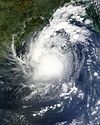
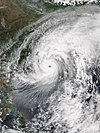






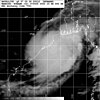

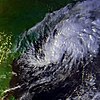


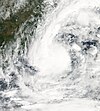



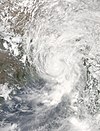
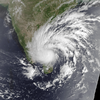
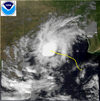

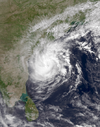

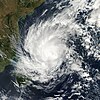

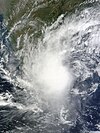
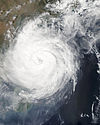


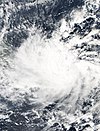

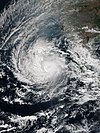
2 Comments
Good work
ReplyDeletethank you
Delete